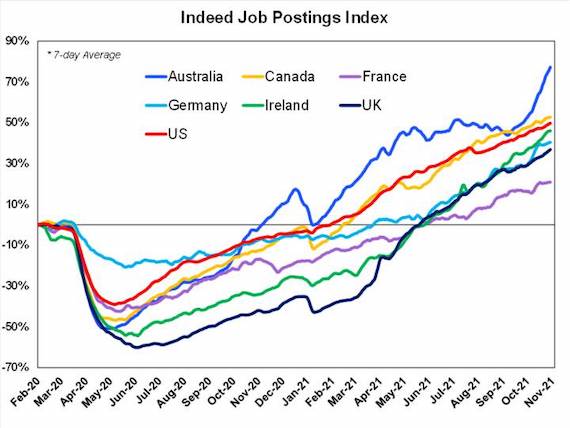Portfolio construction is a much-used term that can be misunderstood.
Fundamentally, the term portfolio construction refers to the process of selecting investments to create the optimal balance of risk and return.
By mixing different types of investments and different asset classes, portfolios can be built in a way that maximises the return for any given level of risk.
This concept of risk is fundamental to portfolio construction. The key to effective portfolio construction is understanding that each individual experiences risk differently and investment needs change dramatically as people’s priorities change over the course of a lifetime.
Risk tolerance
Depending on what stage of life they are at, individual investors can have quite different goals.
An investor early in their career can afford to seek higher returns from their investment portfolio by taking a higher level of risk because they have more time to make back any downturns in markets.
They also have less need for income from their investments than someone approaching or in retirement and can weight their portfolio towards growth assets.
A younger investor can be less concerned about inflation than a retiree because they can rely on wages growth that can maintain their purchasing power. They can also afford to lock up investments for a longer period without worrying about liquidity because they have time before they need to draw down on their assets.
In contrast, retirees tend to be more concerned about capital preservation because they need to draw on their asset pool throughout their retirement.
As they are no longer earning income from work, they need to draw income from their portfolio. This means they should consider weighting their portfolios towards income-generating assets.
Any increase in inflation erodes a retiree’s purchasing power as it costs more to maintain standard of living which means their capital can be eroded faster than planned.
And liquidity is critical for a retiree as assets may need to be sold quickly – for example if there is a medical emergency – without punitive valuations.
The concept of sequencing risk is also a critical difference between early and late-stage investors.
Sequencing risk
Sequencing risk refers to the risk of being forced to sell investments after a fall in valuations. A younger investor can typically ride out market volatility and even buy more assets when valuations are low.
However, late career investors and retirees who are forced to sell assets at low prices to fund their lifestyles have no way of regaining the lost value. A sensible portfolio construction process can protect against this.
The graph below demonstrates that for a young accumulator, market volatility has little effect on final outcomes, which instead are massively impacted by not taking sufficient risk.
But for a pre-retiree, drawdowns have a large impact on retirement capital and lower returns are also meaningful.
The best way to bring this to life is by using an example.
Indeed, AMP Capital
AMP Capital has modelled the effect of both lower returns and a big market drawdown on the retirement outcomes of two people – one in their early career and one pre-retirement – to illustrate the challenges of portfolio construction1.
Each is faced with either a 20 per cent drawdown in markets over six months in their first year of the investment period or a 1 per cent lower annual return across their investing lifetime as if they were seeking a more defensive asset allocation.
All other variables are the same – both are on track for a retirement nest egg of about $1 million. The starting salary is $20,000, wage growth is 3 per cent, super contributions are 9.5 per cent, net annual investment returns are 7 per cent and volatility is 8 per cent. The late career person is assumed to have started with an investment balance of $450,000 at age 55.
The results of the modelling are stark.
The 20 per cent drawdown at the start of the period barely touches the sides for the young investor – all their earnings are ahead of them.
But for the pre-retiree, the 20 per cent drawn down is costly, reducing their total retirement savings by more than $150,000.
By contrast, reducing annual returns by just 1 per cent a year leaves the younger investor more than $250,000 short of their $1 million investment goal by the time they hit retirement.
But for the pre-retiree, the lower return, while still meaningful, is far less important to retirement outcomes.
The lesson is that investors are affected by different risks in different ways depending on where they are in their investing journey but balancing both risk and return is important.
Hedging risk
A question that often comes up is the role of downside protection in portfolio construction.
Again, the answer is different depending on where an investor is at in their investing journey.
Take the example of a pre-retiree and a younger investor with portfolios split equally between equities and bonds going into the global financial crisis (GFC) – with and without downside protection using options strategies.
Without downside protection, the retiree would have seen a pullback in the value of their assets of about 25 per cent and, because they were drawing down on their assets to live their life, they would not have been able to fully participate in the subsequent recovery.
Had they used downside protection on their portfolio, they would have been back on track by 10 years later.
The same is not true of the same strategy deployed by a younger investor. Without downside protection, young investors just keep buying into the market through a downturn and continue to accumulate assets.
But with downside protection – which comes at a cost – they see a drag on their returns, lowering their ultimate savings.
It’s a further reminder of the difference between younger and older investors.
Here’s another one: human beings also have the potential to make mistakes in their investing lives.
If a retiree investor facing the same kind of GFC drawdowns suddenly became risk-averse and shifted their portfolio to 30:70 equities and bonds, this would be an understandable and apparently rational decision to preserve assets.
But markets recover. If that retiree waits until the storm passes and takes three to five years to switch back their allocation to 50:50, they would be 30 per cent worse off than if they did nothing at all.
Asset allocation
So, what assets should retirees look for?
In our view, the key is to seek out desirable risk attributes and not simply take the approach of investing by asset class.
In Australian equities for example, franking credits offer a good income stream for retirees by refunding the tax paid by the underlying companies. It should also be noted, however, that in seeking a higher exposure to Australian equities in pursuit of franking credits, a portfolio will acquire other concentrations of risk, for example: exposure to China. Good portfolio construction should consider and diversify away these concentrations.
In direct assets, infrastructure offers good opportunities for retirees. Many infrastructure assets earn a return on an availability basis regardless of actual usage or economic conditions, providing a stable income. The key consideration for direct assets is liquidity, as holding large allocations of illiquid assets could mean having to disproportionately sell down liquid assets, like equities, at an inopportune time if larger sums of cash are needed for, say, a medical emergency.
For bonds, the traditional defensive characteristics may not be available in a world of near zero interest rates and the potential of rising inflation.
In the last 30-40 years we have seen a terrific run in markets, particularly with bond rates coming down from as high as 16.5 per cent in the case of 10 year Australian government bond yields almost 40 years ago2; to near zero now3. The performance was further buoyed by lower tax rates, falling tariffs and the rise of globalisation.
The corollary of this is that throughout those 40 years, forward return expectations have been declining4.
In fact, a fund with a traditional asset allocation split 60:40 between equities and bonds is near its highest ever valuation level.
We believe this means return expectations from investment portfolios should be expected to be lower going forward until interest rates normalise.
Inflation is also a looming threat to portfolios. US annual consumer price inflation pushed up beyond 6 per cent in October of 2015 and there is a risk that price pressures associated with deglobalisation and decarbonisation defy the widely held ‘transitory’ thesis and stick around.
Goals-based investing
Given lower expected returns and higher inflation, what’s the right portfolio response?
Doing nothing is one approach – simply accept that returns are going to be lower.
Another approach is to increase risk – adding riskier, more leveraged asset classes will improve the probability of getting a return but also increase the probability of losing money.
A third approach is to lower your expectations. This means not changing how portfolios are constructed but accepting the likelihood of lower returns and perhaps adjusting things elsewhere in your life accordingly. In our view, this isn’t of much use or comfort however to today’s pre-retirees and retirees.
And the final – and more important – approach is to adjust strategy to those areas most likely to achieve objectives.
This could include taking a goals-based approach to investing.
For example, a retiree could decide that rather than taking a traditional asset allocation approach to portfolio construction, they instead want to take on the goal of protecting and maintaining their standard of living in retirement. That goal might be measured by providing returns equal to the consumer price index plus 3.5 per cent as an example.
By focusing on the desired outcomes rather than simply considering traditional asset class allocations, investors can consider including alternative investments and strategies that may not be available under a traditional approach.
If you’d like to start investing today, or need help with your current portfolio, call us on 08 6465 5400
1. AMP Capital simulations
2. Reserve Bank of Australia (rba.gov.au)
3. Reserve Bank of Australia (rba.gov.au)
4. MAG Medium term Return Expectations vs Realised 50/50 Diversified
5. Consumer prices increase 6.2 percent for the year ended October 2021 : The Economics Daily: U.S. Bureau of Labor Statistics (bls.gov)
Reproduced with the permission of the AMP Capital. This article was originally published at https://www.ampcapital.com/au/en/insights-hub/articles/2021/december/constructing-a-retirement-portfolio-in-a-low-return-world
While every care has been taken in the preparation of this article, AMP Capital Investors Limited (ABN 59 001 777 591, AFSL 232497) and AMP Capital Funds Management Limited (ABN 15 159 557 721, AFSL 426455) (AMP Capital) makes no representations or warranties as to the accuracy or completeness of any statement in it including, without limitation, any forecasts. Past performance is not a reliable indicator of future performance. This article has been prepared for the purpose of providing general information, without taking account of any particular investor’s objectives, financial situation or needs. An investor should, before making any investment decisions, consider the appropriateness of the information in this article, and seek professional advice, having regard to the investor’s objectives, financial situation and needs. This article is solely for the use of the party to whom it is provided and must not be provided to any other person or entity without the express written consent of AMP Capital.
This article is not intended for distribution or use in any jurisdiction where it would be contrary to applicable laws, regulations or directives and does not constitute a recommendation, offer, solicitation or invitation to invest.




